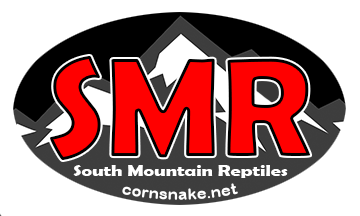Hides

Snakes have relatively poor long-range eyesight and are therefore stressed in the open spaces of most cages. Therefore, most nocturnal snakes (like corn snakes) instinctively stay hidden for most day-lit hours.
Hides are advisable to help reduce stress to your snake, and we recommend at least one for each end of the cage. Keep in mind that if a hide does not truly offer darkness for your snake, it may not be utilized.
For animals like snakes that do not have eyelids or limbs with which to block light from their eyes, sufficiently dark hides in both the warm and cool zones of the cage are essential to their mental and digestive health.
A corn snake’s instinct to hide is greater than its instinct to utilize digestion-friendly temperature zones in the cage, so they may not frequent warm hides that are not sufficiently dark inside. A section of nearly flat bark or an empty box of appropriate size in more than one location is usually sufficient to encourage the thermoregulation necessary for proper digestion. If you can see your snake in the hide, it can see you outside. That does not satisfy the definition of “hide” nor does that reality make your snake feel comfortable in daytime refuges.
Hides are advisable to help reduce stress to your snake, and we recommend at least one for each end of the cage. Keep in mind that if a hide does not truly offer darkness for your snake, it may not be utilized.
For animals like snakes that do not have eyelids or limbs with which to block light from their eyes, sufficiently dark hides in both the warm and cool zones of the cage are essential to their mental and digestive health.
A corn snake’s instinct to hide is greater than its instinct to utilize digestion-friendly temperature zones in the cage, so they may not frequent warm hides that are not sufficiently dark inside. A section of nearly flat bark or an empty box of appropriate size in more than one location is usually sufficient to encourage the thermoregulation necessary for proper digestion. If you can see your snake in the hide, it can see you outside. That does not satisfy the definition of “hide” nor does that reality make your snake feel comfortable in daytime refuges.
Most pet stores sell decorative plastic or ceramic hides that will enhance the appearance of your vivarium, but consider stuffing a percentage (if not all) of the cavity in such hollow accessories – to prevent snakes from becoming stuck therein. I have lately become fond of half-coconut shells as hides, because of the darkness they afford your snake. If you use natural tree parts as cage accessories, thoroughly soak them in a mild bleach/water solution to kill parasites. Thoroughly rinse and dry, before placement in the cage. What I call “half log” bark sections like you see in my book are not sufficiently dark to be good hides. If you use bark sections, I recommend pieces with very low convexity (almost flat). These simulate hides favored by corn snakes in the wild. If you think the hide is too cavernous (a condition in which your snake will instinctively not utilize), wad paper towels to fill the airspace.
Snakes are instinctively drawn to hides where their bodies are completely in contact with their confines.
Snakes are instinctively drawn to hides where their bodies are completely in contact with their confines.
Wild corn snakes climb for many reasons, but climbing is not crucial in captive settings. In the wild, snakes climb to find prey and to escape predators, but such climbing opportunities in cages are not only unnecessary but can sometimes facilitate escapes.
Climbing accessories can increase thermoregulation opportunities in cage situations where ground hides are inadequate, or when overheating occurs at lower cage levels, but if thermometers are properly placed and monitored, climbing is not a necessary thermal option. If you use a branch in the cage, your snake will be able to get closer to the top, so recheck any gaps around the lid, and ensure that the lid is weighted down or securely fastened.
Climbing accessories can increase thermoregulation opportunities in cage situations where ground hides are inadequate, or when overheating occurs at lower cage levels, but if thermometers are properly placed and monitored, climbing is not a necessary thermal option. If you use a branch in the cage, your snake will be able to get closer to the top, so recheck any gaps around the lid, and ensure that the lid is weighted down or securely fastened.
Contact Us
Tel:830-964-3303
Don Soderberg
South Mountain Reptiles
Canyon Lake, TX
Facebook: https://www.facebook.com/southmountainreptiles
Instagram: https://www.instagram.com/smrcornsnakes/
